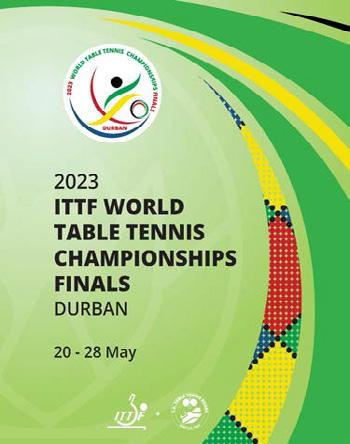off the grid Going

MAY I JUNE 2023 ALSO INSIDE ✦ SOLVING THE ENERGY DILEMMA ✦ AFRICA GOOD NEWS
/
PICTURE JANIERE FERNANDEZ
PEXELS
WELCOME
Welcome to the first edition of Energy Today, a monthly magazine that hopes to turn complicated issues into simple ones to navigate and thus help empower everyone in these times.
The hope is to arm readers and policy makers with deep insights and simplified steps to turn the tide on the energy crisis we face today and thus make it easier to become self sustaining and find alternate solutions to these critical issues.
We speak to thought leaders in energy and climate and also from the ordinary man in the street who is rising above South Africa’s present day issues. We also include big and small Business whose heart is part of creating solutions for the future.

In this edition we also offer you the easy steps to help you get off the grid.
Enjoy!
Publisher:

Editorial: Design:
Independent Media.
Vivian
Warby Kim Stone
SALES:
New Business Development Executive: Mike Nt s asa.
Head of Sales: Charl Reineke
To advertise in this magazine or
an array of our national print titles please contact mike.nt s asa@inl.co.za or charl.reineke@inl.co.za
02 ENERGY TODAY MAY I JUNE 2023 PICTURE JOHANNES PLENIO / PEXELS 2 3 9 13 14 16 20 22 LETTER WHAT IS ENERGY? SIX STAGES OF GOING OFF THE GRID “WE KICKED ESKOM TO THE KERB” WHAT IS THE SOLAR PANEL INCENTIVE FOR INDIVIDUALS? SOLVING THE ENERGY DILEMMA AFRICA GOOD NEWS AFRICAN ENERGY REVIVAL CONTENTS MAY I JUNE 2023
DISCLAIMER: The publisher and editor of this magazine give no warranties, guarantees or assurances and make no representations regarding any goods or services advertised within this edition. Copyright INDEPENDENT MEDIA. All rights reserved. No portion of this publication may be reproduced in any form without prior written consent from INDEPENDENT MEDIA. The publishers are not responsible for any unsolicited material.
in
WHAT IS ENERGY
Energy is how things change and move. It takes energy to cook food, to jump in the air, go to the gym, dance, walk to school, or play sport – it is “the ability to do work”.


PICTURE VALDEMARAS D BBJ13LH04X / UNSPLASH
03 ENERGY TODAY MAY I JUNE 2023
Organisms use energy to survive, grow, respond to stimuli, reproduce, and for every type of biological process. Energy is never seen to exist on its own but only as part of a system of particles.

PICTURE ANUSORN NAKDEE 04 ENERGY TODAY MAY I JUNE 2023
You, as a human, could be seen as a power plant. When moving, your body becomes an energy factory. In fact, according to the Washington Post, even at rest, the human body generates as much energy as a 100 watt light bulb. But how is energy harvested from humans? In England there is a gym powered by nothing but the

grunt and sweat of members. Power is supplied by treadmills, stationary bikes and step climbers. When in operation, each machine powers itself and channels surplus energy in the form of electricity. Transport is 100% dependent on energy and the sector is vital in the mission to conserve energy. This year a company unveiled a tyre,which
features a combination of piezoelectric materials (which produce an electric current when they are put under stress) and thermoelectric patches to absorb energy from vibrations, light and heat. Systems designed to harvest kinetic energy can supplement power systems anywhere people take part in activities that add up to lots of high-intensity workouts.
05 ENERGY TODAY MAY I JUNE 2023
Energy can take a number of different forms and can be potential, kinetic, thermal, electrical, chemical or nuclear.

06 ENERGY TODAY MAY I JUNE 2023
PICTURES MAX RAVIER. LUCAS-PEZETA, CLIVEKIM
In 2007, a pair of Massachusetts Institute of Technology (MIT) students proposed using these “crowd farms” as a way of extracting energy for such things as LED lights. More recently, the concept popped up as an “eco-nightclub” in London where energy is amassed using blocks made of piezoelectric materials

positioned just beneath the dance floor.
A mall the US recycles body heat from shoppers to regulate the indoor climate. Highways and freeways, which are hotspots for untapped energy, have been used to harvest energy from the vibrations produced by moving cars by coating the road with energy-absorbing
materials. Over three months, the net electrical output was sufficient to run the motion sensors on a traffic light.
Also, engineers in China have developed a technology that uses the mechanical energy of only a beating heart to pump power to pacemakers. –SG correspondant and Washington Post
PICTURE SEBASTIAN-ERVI 07 ENERGY TODAY MAY I JUNE 2023
Wholesale SOLAR (delivered to your door) Myles - 083 780 2708 | www.solarsonic.co.za
GOING OFF THE GRID
By Bonny Fourie bronwyn.fourie@inl.co.za
FOR INSTANCE, if you are thinking of a partial off-grid system, it could set you back at least R100 000.
To start, experts say, the key to knowing what you need and your reasons for wanting to be independent of Eskom will help guide you to the type of home system you need.
Stage 1 First things first
The first thing to do, says Christiaan Hattingh, the managing director of AWPower, is define what the term “offgrid” means to you.
Does it mean reducing your monthly electricity bill to a minimum or does it mean not having a grid connection at all?
“If it means reducing your monthly
STAGES 1 TO 6 EXPLAINED
electricity bill to a minimum, understand your home set-up.”
This means knowing what you consume and when.
“Heating and cooling – geysers, underfloor heating, and air conditioning –typically are the highest energy consumers, along with loads that run for extended periods, such as pool pumps and security lights.”

Other factors to ponder include whether you have LED lights installed, if you are using warm water from the geyser to wash your dishes instead of boiling the kettle for warm water and if your pump is on a timer.
Once you understand how much energy you consume daily (kWh units)
and throughout the year, a correctly sized system – inverter, batteries, and panels –can be designed.
“If you are unsure about this, a load measurement exercise can be done by your installer to analyse your consumption over a period of time.”
Echoing this, Georgina Smit, the technical head at the Green Building Council of South Africa (GBCSA), which has played a key role in the shift to green building practices in the country, says you need to get intimate with your household energy use before going off-grid.
“You really need to understand where power is used and when is your highest demand in order to drive efficiency. First, ensure that you have optimised the energy
09 ENERGY TODAY MAY I JUNE 2023
There are ways to become free of Eskom and keep the lights on, but it will cost you.
IMAGE:
GREG RIVERS UNSPLASH
More South Africans are considering going off the grid, with unreliable electricity and water supplies. However, the costs are usually the deterring factor.
efficiency performance of your home. This speaks to things like energy efficiency lighting, good insulation, appropriate solar control on your eastern and western facing facades, and appliances that use minimal energy.
“Following that, installing a solar thermal water heating system to heat your water for showering and in the taps is a must, given that water heating accounts for 30% to 40% of an average homeowner’s energy bill.
“Last, installing solar PV that converts the sun’s energy into electricity will transition you to be off the grid and independent of the Eskom supply,” she says.
If you want to go completely off-grid, with no grid connection, Hattingh says you need to know the limitations of your chosen energy system based on its size and generation capability throughout the year, such as the energy production from the PV panels.

“The benefit of understanding what you use and when, is that you will pay for a system that is correctly sized to your needs,” he says, adding: “Going the solar
route is a lifestyle decision, and once you have experienced the benefits and the control you have, you will not go back.”
Stage 2 Benefits of a hybrid inverter system
A hybrid inverter system, however, is a solution that most households opt for to get themselves partially off-grid. The benefit of a hybrid system, says Hattingh, is that you don’t have to oversize a system –and spend a lot of money – to reduce your monthly bill because you have the grid as a back-up, especially during bad weather.
“The system can provide savings from solar and the stored battery power during normal on-grid operation, but is also able to provide power to essential loads from the battery and solar, if available, during load shedding or power outages.
“These systems can be expanded over time, giving you more flexibility to fit your budget and needs.”
In terms of pricing, Hattingh says you are looking at a minimum of R100 000 to start with a small system consisting of an inverter, battery and panels installed by qualified installers.
Stage 3 Get a clear picture
Homeowners who want to be completely free of Eskom do have a clear picture of what they use and when they use it.
“They are energy-conscious and typically incorporate gas for cooking and even water heating at times.”
He emphasises that it is vital to understand the limitations of the system installed.
“The inverter size determines what you can use at any given moment. The battery size and capacity have to match the inverter size and the general rule of thumb is a 1:2 rule as a minimum.
“For example, for a 5kW inverter, 10kWh battery capacity is typically required. The number of panels installed needs to be able to power the loads during the day but also charge your batteries to 100%. This is especially important during winter and means that you would have excess capacity during sunny months.
“For periods of continuous bad weather, a generator could be incorporated to charge the batteries.”
In general, Hattingh says, a completely off-grid system is two to three times more
10 ENERGY TODAY MAY I JUNE 2023
expensive than partially off-grid due to the need to oversize for bad weather months.
Stage 4 Completely off-grid
To be completely off-grid means you are self-sufficient and easing the load on the national grid, but this “comes at a cost” and homeowners should be aware of the risks of not having back-up power available.
“Partially off-grid should be the route that most people should consider due to the costs. This will also satisfy most people’s needs,” Hattingh says.

In order to be completely off grid, Smit says this should, ideally, be thought about at the design stage of the building of the home to make sure the passive elements drive energy efficiency as well as allowance for the storage space.
“A homeowner must make sure their home, their appliances and behaviour are all very efficient, and then start to look at gathering energy via rooftop solar, and if the site allows, micro-hydro.”
Stage 5 Solar systems
In addition to having a more stable power supply, Hattingh says the moment people
consider solar power, they become more energy-conscious, which is a plus.
“Solar systems mostly have builtin features to measure and record consumption and show it in an app or on your computer. Once the systems are installed and you see how much electricity you consume, it becomes part of your lifestyle. One example of this in a household is a dishwasher that used to run during the evening, now runs during the sun hours.”
He notes that the most important installations that people ask for are those that allow them to not only run their essentials during load shedding but also provide daily savings.
Smit adds: “From the GBCSA’s perspective, our national grid is a really important part of our energy economy as we require it to store and move energy. Our energy transition needs to include better integration between our national grid and small scale embedded generation.”
The GBCSA is seeing “a significant increase in interest” from the residential property sector with regard to greening.
“This spans several off-the-grid features

11 ENERGY TODAY MAY I JUNE 2023
Solar systems mostly have built-in features to measure and record consumption and show it in an app or on your computer. Once the systems are installed and you see how much electricity you consume, it becomes part of your lifestyle. One example of this in a household is a dishwasher that used to run during the evening, now runs during the sun hours
such as looking at water recycling and increasing veggie gardens for food. There is also a demand for residential developments to include community facilities that can be shared and create spaces for enjoyment and that are well located near opportunities and amenities.”
Stage 6 The cost and how to ease it
Residential financing for private individuals is in the early stages, but Hattingh says it is more readily available for homeowners from various banks and financing institutions.
“From our experience, our clients mostly pay cash.”
Praven Subramoney, the chief executive of FNB home and structured lending solutions, says the cheapest form of financing the alternate energy solutions would be to use available savings instead of credit. However, with the growing needs of customers in the context of working from home, the hefty annual price increases being levied by the power utility, and exacerbated by the recent escalation in load shedding, customers may not always have immediate access to the large initial capital outlay required to finance these solutions in available savings.
Therefore, they can use their home loans as vehicles to fund the energy solutions.
“Customers must bear in mind that their property would have typically grown in market value if you are a few years into your bond payments, which allows for access to further equity.”
The options include:
✦ Making use of the available funds in your home loan flexi facility or secured facility (prepaid funds).
✦ Applying for a re-advance on your home loan, and at no extra cost.
✦ Adding a 20% future-use loan to your home loan, or accessing your future use if registered in your bond amount, at no additional cost.
✦ Applying for a further loan on your home loan/secured facility.
✦ Bonding your unencumbered property.
Subramoney says FNB has partnered
with trusted, accredited suppliers to provide customers with residential solar systems at discounted rates of up to 20%.

“An Eco-Home Solutions category has been created on the eBucks Shop where we have curated a few solar hybrid packages – entry, small, medium and high. A combination of cash, eBucks and finance can be utilised to fund these solutions.
“It’s important to note that customers wishing to use their home loan or secured credit facility to finance a solution of this nature, do so smartly and weigh up the financing costs versus the savings in monthly electricity costs over the lifetime of both the loan and the solution.”
Similarly, Absa Home Loan customers also have financing options available to them for funding alternative power upgrades to their properties, says managing executive Nondumiso Ncapai.
“If the market value of your property has increased and you have equity in the property, you can apply for a Further Advance which is an additional bond against the property. This will incur bond registration costs and the funds will be paid directly to you.
“Alternatively, if you have paid down your original loan amount and have equity in your property, you can apply for a Re-advance. In this case, an additional bond registration will not be applicable, and the funds will still be paid directly to you.
As with FNB, the bank can also offer customers credit options like personal loans or credit cards.
Ncapai adds: “We understand our customers have unique needs and we encourage them to engage us when considering large home-improvement projects, including the installation of alternative energy systems, to explore the various options available to them.
“Regardless of which alternative energy solution you opt for, it’s important that you work with a credible installer who has a wireman’s licence, is experienced with the relevant installation type, and can provide the necessary after-sales service and guarantees.
12 ENERGY TODAY MAY I JUNE 2023
It’s important to note that customers wishing to use their home loan or secured credit facility to finance a solution of this nature, do so smartly and weigh up the financing costs versus the savings in monthly electricity costs over the lifetime of both the loan and the solution
WE KICKED ESKOM TO THE KERB’
By Vivian Warby vivian.warby@inl.co.za
IT WAS a “no-brainer”, they say about making their spot Eskom free.
However, it wasn’t an overnight decision and they thought long and hard about going solar.
“A two-day outage after a rain storm was the final decider,” says Moss.
“We then spoke to other people in our area who were using solar and came across a reliable installer who had put in systems in our area. There were many good reports.

“They came in, analysed our usage and made recommendations, with quotes. Although they recommended a 8Kwh inverter, with two lithium batteries and a 12 panel solar array, the 8 kwh inverter has a noisy fan and, as our inverter and batteries are in a living area, this did not suit us.
“We finally agreed on 2x5kwh inverters, two 5Kwh lithium batteries and 10x550w solar panels.”
The cost? With transport from Cape Town and installation the total was R220k.
However, says Moss, “we should be able to claim the Sars rebate on the panels, which is 25% of panel cost
only, limited to R15k”.
He says the installer asked for 80% payment in advance, with a wait of a month for installation.
The installation went smoothly and was completed in one morning.
“Although we are still connected to Eskom, the grid is used only to charge batteries during long overcast periods or two four-hour periods of stage 6 load shedding during the night.
“It is now a month later and we estimate a monthly saving of about R3 000 a month which gives a payback period of six to seven years.”
But, says Moss, “that is not the issue. The peace of mind that having an uninterrupted electricity supply gives is amazing”.
“There is no stress of food going off in the freezer. The freedom to go to bed or stay up as we wish and not having to plan around load shedding is amazing.”
For the Moss family, peace of mind and less stress is the best thing about not relying on Eskom which, Moss points out, you can’t do anyway.
Getting solar panels installed can be a game-changer I IMAGE: BILL MEAD UNSPLASH
John Moss and his wife, Amy, who live outside Cape Town, decided to become Eskom independent earlier this year after constant load shedding at their home began causing a bigger problem on their property.
13 ENERGY TODAY MAY I JUNE 2023
WHAT IS THE SOLAR PANEL INCENTIVE FOR INDIVIDUALS?

The solar panel incentive was announced by the Minister of Finance earlier this year. This is meant to help individuals in their immediate decision making, rather than postponing any solar installation until the legislative process can be finalised.
WHAT IS THE OBJECTIVE OF THE INCENTIVE?
Government proposes this programme to encourage households to invest in clean electricity generation capacity which can supplement electricity supply. The incentive will only be available for 1 year to encourage investment as soon as possible.
WHO CAN CLAIM THE INCENTIVE?
Individuals who pay personal income tax can claim the rebate against their tax liability. This rebate is not intended for solar installations at business premises.
WHAT CAN BE CLAIMED?
Individuals will be able to claim a rebate to the value of 25% of the cost of new and unused solar photovoltaic (PV) panels, up to a maximum of R15 000 per individual.
For example, a person buys 10 solar PV panels, at a cost of R4000 per
panel (so total cost of R40 000). That person would be able to claim 25% of the cost up to R15 000, so R10 000. A different person is able to buy 20 panels at a cost of R4000 per panel (so total cost of R80 000). The calculation of 25% adds up to R20 000, but they can only claim R15 000.
WHAT ARE THE REQUIREMENTS?
✦ Only new and unused solar PV panels qualify, to ensure that the capacity is in addition to what the country already has in place. The panels can be installed as part of a new system, or as an extension of an existing system.
✦ Only solar PV panels with a minimum capacity of 275W per panel (design output) qualify for the rebate. Other components of a system – batteries, inverters, fittings or diesel generators – and installation costs do not qualify. Portable panels will also
not qualify.
✦ Solar PV panels must be installed at a residence that is mainly used by an individual for domestic purposes. The installation will have to be proved with a certificate of compliance in terms of the Electrical Installation Regulations, 2009 to ensure safety of the installation and compliance to electric regulations.
✦ The solar PV panels must form part of a system that is connected to the mains distribution of the private residence.
✦ The rebate applies to qualifying solar PV panels that are brought into use for the first time in the periodfrom 1 March 2023 to 29 February 2024.
HOW CAN PEOPLE CLAIM THE INCENTIVE?
Individuals will be able to claim the rebate if they have:
✦ A VAT invoice that indicates the cost of the solar PV panels separately

14 ENERGY TODAY MAY I JUNE 2023
PICTURSE JUANITA SWART, SUPPLIED
from other items, along with proofof payment.
✦ Certificate of Compliance evidencing that the solar PV panels were brought into use for the first time inthe period from 1 March 2023 to 29 February 2024.

PAYE taxpayers will be able to claim the rebate on assessment during 2023/24 filing season. Provisional taxpayers will be able to claim the rebate against provisional and final payments.
WHY ONLY SOLAR PANELS, AND NOT DIESEL GENERATORS, INVERTERS, BATTERIES AND INSTALLATION COSTS?
Diesel generators are often used as emergency back-up, but are not a sustainable solution to generate additional power. They increase demand for fuel and have negative environmental impacts. Including generators would detract from the climate objectives government is committed to, where fiscal instruments like the carbon tax play an important role.
While an inverter and batteries are required to use solar panels, inverters and batteries can be operated without solar panels – in which case they offer no additional capacity to the system. The focus on solar PV panels is to maximise the use of limited government funds to get as much additional generation capacity as possible – and recognises
that government will have to focus on a partial rebate of the components that are most directly linked to generation. This is why installation costs are not included either.
WHAT ABOUT PEOPLE WHO RENT THEIR HOMES?
There is no ownership limitation for the incentive, so installations by landlords or renters would be eligible, but only the party that pays for the solar panels can claim the rebate.
WHAT ABOUT SECTIONALTITLES / BODY CORPORATES?
If occupants are enabled to install their own panels, then the tax incentive applies as for all other individuals. A body corporate will not be able to claim this incentive. It is not clear whether many body corporates will be purchasing solar installations instead of using leasing or other options to avoid up-front costs for members. Government will be consulting on this aspect. If there is widespread interest in body corporates purchasing and installing solar panels, then payment (e.g special levies) for solar installations levied from the occupants would have to indicate the cost of the solar panels separately – as would be the case for any other claimant. The applicable Certificate of Compliance data would also have to be shared with SARS. Because there would be
some adjustments to ensure that the right people could claim the right amounts, there will be consultation to determine the required approach and documentation.
WILL I NEED TO PAY SARS BACK IF I SELL MY HOME AFTER INSTALLING SOLAR PV PANELS?
No, there will be no recoupment if you sell your house after having benefitted from this incentive as the solar panels will likely remain fixed to the house and used by the following owner – still enabling an expansion in generation. There will, however, be a claw-back of the rebate if you sell the panels themselves within one year after they were first brought into use to counter potential abuse.
WHEN WILL THIS BECOME PART OF TAX LEGISLATION?
This incentive will be included in the annual tax amendments. A draft version of the legislation will be published for public comment no later than the publication date of the 2023 Draft Taxation Laws Amendment Bill. The Minister tables tax bills during the Medium Term Budget Policy Statement (MTBPS) in October each year. Parliament considers the amendments after which the President can assent to the amendments – usually by January of the year after the announcement.

15 ENERGY TODAY MAY I JUNE 2023
There is no ownership limitation for the incentive, so installations by landlords or renters would be eligible, but only the party that pays for the solar panels can claim the rebate
SOLVING THE ENERGY DILEMMA
Governments around the globe are turning to technology and the Fourth Industrial Revolution to resolve energy challenges and efforts are already being made to meet these challenges, writes Professor Tshilidzi Marwala, the Rector of UN University in Tokyo, Japan and UN Under Secretary General. When this article was written Marwala was Vice Chancellor and Principal at UJ

16 ENERGY TODAY MAY I JUNE 2023
The South African interpretation of this is undoubtedly not quite what Poe had in mind. In 2015, South Africa experienced an estimated 83.5 days of load shedding.
Early indications suggest that this year we may beat that number. A status report from embattled power utility Eskom shows that we are on code red for the next three months at the very least – if one is optimistic. Menacingly, this is our worst possible risk level, which indicates that there will be a definite shortage of reserve power generation and rolling blackouts will continue to be a weekly reality.
And, of course, as we are all acutely aware, winter usually does not bode well for us.
As we plunge in and out of darkness, it has become increasingly apparent that we need to posit solutions instead of clinging to archaic systems. It is not just the dark that is a concern but our reliance on electricity to power our technologies. What is clear is that we cannot go on like this. Do we spend the rest of our lives bracing for the possibility of load shedding?
Even in the best of times, we have poorly maintained and ageing power stations which are incredibly unreliable. Almost 10 000 megawatts are out of commission at any given time.

We now find ourselves amid a paradigm shift which fundamentally redefines
 PROFESSOR TSHILIDZI MARWALA is the Rector of UN University in Tokyo, Japan and UN Under Secreatary General.
PROFESSOR TSHILIDZI MARWALA is the Rector of UN University in Tokyo, Japan and UN Under Secreatary General.
PICTURES MAX
It has become increasingly apparent that we need to posit solutions instead of clinging to archaic systems
RAVIER, LUCAS PEZETA, CLIVEKIM
IN HIS 1845 poem The Raven, Edgar Allan Poe wrote: “Deep into the darkness peering, long I stood there, wondering, fearing, doubting, dreaming dreams no mortal ever dared to dream before.”
17 ENERGY TODAY MAY I JUNE 2023
every aspect of society and is poised to address our most profound challenges. The Covid-19 pandemic has confirmed that the Fourth Industrial Revolution (4IR) is here. It is the fusing of people and technology which has inextricably linked the physical, digital and biological worlds.

It encompasses the entire wave of disruptive technologies, ranging from 5G networks, autonomous vehicles, AI, machine learning, 3D printing, robotics and the internet of things (IoT), for instance. These technologies are fundamentally changing the way we learn, work and even power our cities. If we are indeed overhauling our systems, our policies and our approaches, then what is it that we dare to dream?
In the case of Eskom, there are 4IR solutions that can be implemented. The field of engineering calls for a maintenance strategy. In the 4IR, this strategy
is one of predictive maintenance. This, I would argue, is the path we need to explore to create efficient structures from financial, technological and operational perspectives.
In technical terms, this is akin to the neural networks which form part of deep learning, a central tenet of the 4IR. Neural networks use a set of algorithms, similar to a human brain, designed to recognise patterns. Transformers are monitored directly during normal operations to predict failure. Eskom can then estimate when its transformers will fail and replace them beforehand. If we can predict when this will happen, we can extract the most optimal use of them.
The rationale behind this is that there is convenient scheduling of corrective maintenance, which helps prevent unexpected equipment failures. Eskom should invest in condition-monitoring
PICTURE ANUSORN NAKDEE
18 ENERGY TODAY MAY I JUNE 2023
The Fourth Industrial Revolution is here and It encompasses the entire wave of disruptive technologies, ranging from 5G networks, autonomous vehicles, AI, machine learning, 3D printing, robotics and the internet of things
sensors and other devices and retrain employees to use this equipment and accurately interpret the data they gather. Nevertheless, this decreases costs and potential power cuts in the long run.
But what about other energy alternatives? An argument often made is that the 4IR must be accompanied by sustainability. How do we harness digital technologies so that development is not dependent on exhausting finite resources and increasing emissions?
This invariably calls for a shift towards renewable energy, which offers the possibility of greater access to electricity, particularly in Africa, where we face glaring infrastructure gaps. Africa also bears the brunt of climate change. AI can simultaneously analyse the past, optimise the present and predict the future, making it a useful tool in the renewable energy sector.
While this can be deployed in our current energy systems, it does make a wider spread of renewable energy an achievable goal. For instance, AI-based smart systems can help integrate renewable energy sources into the existing power grids.

In South Africa, at the same time, we have
backed ourselves into something of a corner with a less than adequate energy-mix strategy. For example, the Pebble Bed Modular Reactor, which was considered a safe and small set of nuclear reactors for power generation, using hightemperature technology, was abandoned in 2010 after almost R10 billion had been invested in the project.
Instead, energy storage can be managed through AI, considering demand, energy generation, costs and even grid congestion. In Nigeria, Azuri Technologies uses a box the size of a landline phone, that uses AI to track household energy needs and adjusts the power output accordingly through dimming lights or slowing down fans.
Solutions like this can be pivoted across the continent. If we have any hope of keeping the lights on in South Africa, the answer cannot be the usual strategy of establishing a task team. Instead, we must embrace the technologies of the 4IR.
Professor Tshilidzi Marwala is the author of books such as Closing the Gap: The Fourth Industrial Revolution in Africa and Leading in the 21st Century
19 ENERGY TODAY MAY I JUNE 2023
In South Africa we have backed ourselves into something of a corner with a less than adequate energy-mix strategy.
AFRICA GOOD NEWS

ECO HANDCARTS
Kenneth Guantai — Kenya
HANDCARTS are seen everywhere in Kenya and many informal workers earn a living by using them.

They are loaded with goods at markets and used to carry bags at airports and bus stations. The pushers work hard to transfer the goods they carry, as the loads are often heavy.
They are also seen on Nairobi’s busy streets where they can hold up traffic, prompting a plan to ban them from city roads.
Kenyan innovator Kenneth Guantai came up with a smart solution. He was concerned that many informal workers would lose their living if the carts were banned. His idea was to power the hand carts with batteries that are recharged by the rotation of the carts’ wheels.
The Kenyan government supported the innovation with seed money and now many battery-powered carts are seen on Nairobi’s roads.
The eco carts have several advantages: they’re easier to use, are faster than the manually pushed carts, which makes them better in traffic, and can carry heavier loads. They increase employment opportunities because, thanks to their greater speed, the operator can squeeze in more journeys.
“We want to make the lives of all the hard-working vendors and workers across Kenya – and the world – easier, by using the energy they’re already creating to ease their load,” Guantai said.

The carts were shortlisted for the Royal Academy of Engineering’s 2019 Africa Prize for Engineering Innovation.
FARM IN A BOX
PAUL MATOVU of Uganda comes from a farming family, but when he moved to the capital city Kampala he had nowhere to plant veggies.
He realised there is a lot of wasted land in cities and came up with the idea of “a farm in a box”, which can be set up on any vacant patch of land, and has its own composting system.
“So many young people don’t know much about farming – and yet struggle to afford healthy food in the cities. We wanted to change that,” Matovu told CGTN News.
The wooden boxes can be used to grow both fruit and vegetables.
“We put the first tray and add soil then place the second tray; we just keep stacking trays together.”
The box farm contains a chamber in the middle where organic fertiliser is applied to boost yields.
He remembers his first months in Kampala.
“The land was very small. Every time we tried growing crops in sacks they would get washed away by the rains and so we started using boxes, playing around with boxes, and that’s when we came up with this kind of box.”
Matovu has sold his box farms to about 65 people in Kampala.
The farm in a box was shortlisted for the Royal Academy of Engineering’s 2019 Africa Prize for Engineering Innovation.
THE BICYCLE MAN
TANZANIAN Bernard Kiwia is a resourceful man. He started off fixing bicycles and became well known locally as being able to sort out anything that might happen to a bike.
Then he started wondering what else he could do. In 2007, he attended the International Development Design Summit in the US where he was inspired by Guatemalan inventor Carlos Marroquin, who invented a device for shelling mielies, powered by bicycle gears.
Kiwia began thinking about how to help rural people in his country by solving problems using locally available materials.
As Global Shakers, a publishing platform that tells the stories of amazing innovators, points out, this approach
bike; a solar-powered hot water system using old fluorescent tubes; a fruit-juice blender and a windmill-operated washing machine (he built the machine too). If the wind isn’t blowing, he can pump water from his borehole using a stationary bike.

Of the blender he says: “In the city, you can buy juice in any hotel or restaurant. But in the village, people can’t make juice because there is no electricity. Fruits come from the village, but in the village, they have fruits that they can’t finish in a season. So, the rest of the fruits they throw away.”
Not any longer, thanks to the fact they can now make juice and sell it to the cities.
He’s also working on an idea to use a bike
tends to be pretty green.
In an interview, Kiwia said: “When people are in the village, they want to have the same life as people living in the cities.”
But villages are often off the grid, which makes activities like charging a cellphone, running a washing machine or heating water difficult.
But not for Kiwia. He has developed a cellphone charger powered by a

to make a machine that plants seeds.
Global Shakers says Kiwia’s innovations not only ensure energy independence in often poor areas but also help start new businesses.
Kiwia co-founded Twende Social Innovation, which identifies local needs and engineers new solutions. He also runs a creative capacity-building workshop.
20 ENERGY TODAY MAY I JUNE 2023
GLOBAL GOOD NEWS
REASONS TO BE CHEERFUL
THE WORLD is not on track to meet its climate change targets, reports the BBC’s chief environment correspondent Justin Rowlatt, but he believes 2021 will be a turning point for tackling climate change.

This is why:
HOT OFF THE PRESS
THE DISCOVERY of a hot, rocky “super Earth” near one of the oldest stars in the galaxy has surprised an American team of planethunting scientists, according to The Good News Network.
Team leader, and University of Hawaii postdoctoral fellow Lauren Weiss, said: “TOI561b is one of the oldest rocky planets yet discovered. Its existence shows the universe has been forming rocky planets almost since its inception 14 billion years ago.”

The planet is about 50% larger than Earth but needs less than half a day to orbit its star.

LOCKDOWN POLLUTION
AIR POLLUTION levels around the world decreased during the early lockdowns of 2020 but not as much as expected, according to a study led by scientists from the University of Birmingham in the UK.
The study measured levels of nitrogen dioxide, ozone and fine particle concentrations in 11 cities last year including Beijing, Wuhan, Milan, Rome, Madrid, London, Paris, Berlin, New York, Los Angeles and Delhi. The results were published in Science Advances in January.
The researchers found that, after adjusting for weather effects, the reduction in nitrogen dioxide was less than they had expected, while lockdowns caused concentrations of ozone to increase.
Fine particle concentrations decreased in all the cities except London and Paris.
Zongbo Shi, professor of atmospheric biogeochemistry at the university and lead author of the study, said: “Emission changes associated with the early lockdown restrictions led to abrupt changes in air pollutant levels but their impacts on air quality were more complex that we thought and smaller than we expected.
“Weather changes can mask changes in emissions on air quality. Importantly, our study has provided a new framework for assessing air pollution interventions by separating the effects of weather and season from the effects of emission changes,” he said.
“For every day you’re on Earth, this planet orbits its star twice,” said Stephen Kane, a planetary astrophysicist and team member from the University of California, Riverside.

Part of the reason for the short orbit is the planet’s proximity to its star, which also creates incredible heat. Its estimated average surface temperature is over 1 726°C – much too hot to support life as we know it today.
Global leaders will meet in November in Glasgow for the follow-up to the Paris Climate Accord of 2015 and it is likely that carbon targets will be tightened.
Countries are already committing themselves to steeper carbon cuts. In September, China’s president Xi Jinping told the UN General Assembly that China aimed to be carbon neutral by 2060. That country is currently responsible for 28% of global greenhouse gas emissions.
Renewables now offer the cheapest source of energy.
In October, the International Energy Agency, an intergovernmental organisation, said the best solar power schemes offered “the cheapest source of electricity in history”.
Rowlatt says Covid has changed everything. It has shaken our sense of invulnerability and governments have stepped forward with stimulus packages to reboot their economies. With historically low interest rates everywhere, it has rarely been cheaper to be able to do this.
And there is increasing public pressure on business to choose green solutions. Rowlatt says this makes business sense. Why would companies want to carry carbon risk in their portfolios?
PICTURES GOINYK, SRIP, OG MPANGO, POLINA KUZOVKOVA, DR OBOTDEAN, ALEX AZABACHE
AFRICAN REVIVAL ENERGY
The continent’s promise and future developments are tied to the solutions it picks with regards to its future energy mix, writes Saliem Fakir

22 ENERGY TODAY MAY I JUNE 2023
THE SOLUTIONS Africa opts for have implications for the advancement of agriculture, industry, the use of digital technologies and growth in exports.
Energy access’s remit extends to issues on broader human development and strengthening democracy on the continent.
Energy provision that is accessible, cheaply attained by more and more households, nourishes individual autonomy and will expand the scope of human capability, not only in the domain of self-sufficient villages, towns, cities, and homes, but also the inclination to participate more actively in the political sphere. The less time people spend eking out a living the more they can spend addressing their political concerns.
WHAT EXACTLY IS AFRICA’S ENERGY SITUATION?
The picture is one of contradictions.
There are vast amounts of oil, gas, coal and uranium but very little of that is used to meet basic needs. Most of the primary energy sources are exported to Africa’s major trading partners, Europe and China. The energy poverty index for Africa is around 350-700kWh a year, which is well below the global average.

Even where there is access to electricity it constitutes a high percentage of household costs, with poorer households less able to afford these costs. The average cost of electricity is around US $0.18 per kWh (about R2.70) compared to South Asia where it is around US $0.07kWh.
Then Africa faces a paradox – it has vast solar and wind resources and an underserved populace that suffers from a lack of energy access and poverty. Solar resource availability, remarkably, is fairly uniform across the continent. Sub-Saharan Africa has between 600 and 700 million people who do not have affordable, clean


23 ENERGY TODAY MAY I JUNE 2023
SALIEM FAKIR is executive director of the African Climate Foundation
Africa has vast solar and wind resources and an underserved populace that suffers from a lack of energy access and poverty
and reliable energy.
And where energy is provided, it is often from old and creaking infrastructure. With renewables, the need for long wires and centrally planned energy systems is for a bygone era. The rate at which technologies are progressing, and costs coming down globally, has the potential for Africa to leapfrog the electricity provision model and how it participates in the clean energy revolution knows no bounds.
The main sources of electrical and nonelectrical energy at the moment are oilbased fuels, gas, coal, wood and charcoal. Of the renewable sources, hydro power dominates, followed by geothermal, smallscale wind and solar. South Africa’s power is largely coal-based but this will decline as more and more renewables come online. South Africa’s potential for renewables –both solar and wind – is significant and can be expanded beyond the government’s plan for 19 000MW to 30 000MW.

This is not to mention the vast potential for rooftop solar photovoltaic
panels – currently untapped – if the right policy and regulatory enabling conditions are put in place. A study by the International Renewable Energy Agency notes that, by 2030 ,Africa can increase its renewable capacity by fivefold compared to 2013 figures, and these can be from four sources: hydro power, solar, wind and biomass. To achieve this, Africa needs $70 billion a year of investments in generation technologies and grid infrastructure.
The overall electrification rate in Africa is around 45%, of which 72% is in urban areas and 28% in rural areas (according to the African Energy Commission) – the potential is large. Renewables are much cheaper than fossil fuels and have the added advantage of being able to be deployed rapidly.
The key is enabling government policy and cheap sources of finance to scale renewables. Africa is caught in an energy poverty trap and renewables offer a way to for us to escape this poverty trap.

PICTURE LILLITVE
The main sources of electrical and non-electrical energy at the moment are oil-based fuels, gas, coal, wood and charcoal
24 ENERGY TODAY MAY I JUNE 2023











Have you discovered tHese digital magazines yet? To receive all our FREE digital magazines directly to your mailbox, email digimags@inl.co.za with the word Digital. click Here to read our magazines now. Advertising Sales queries: Charl Reineke | charl.reineke@inl.co.za






















 PROFESSOR TSHILIDZI MARWALA is the Rector of UN University in Tokyo, Japan and UN Under Secreatary General.
PROFESSOR TSHILIDZI MARWALA is the Rector of UN University in Tokyo, Japan and UN Under Secreatary General.



































